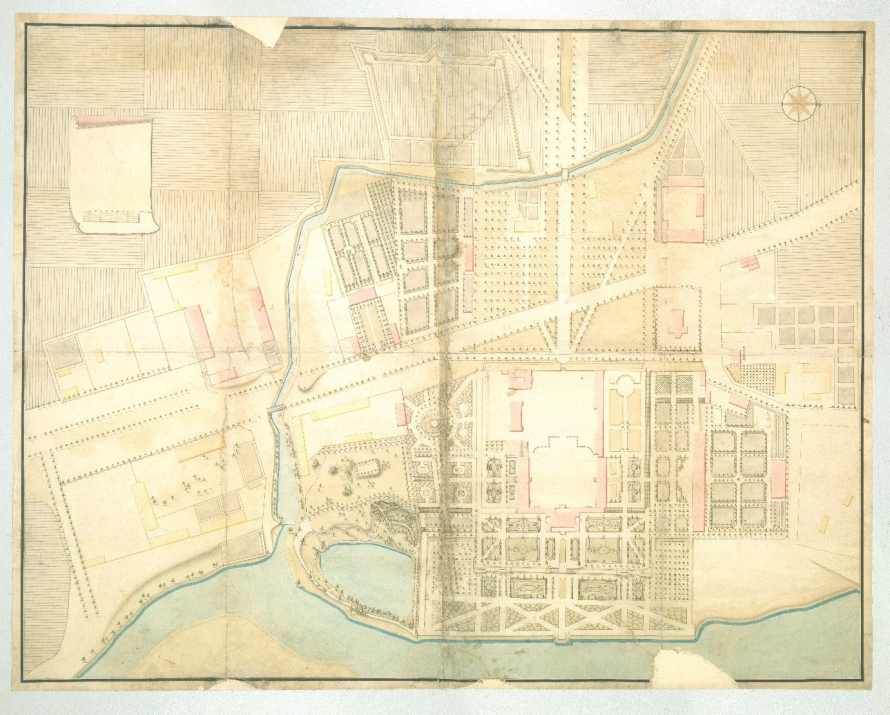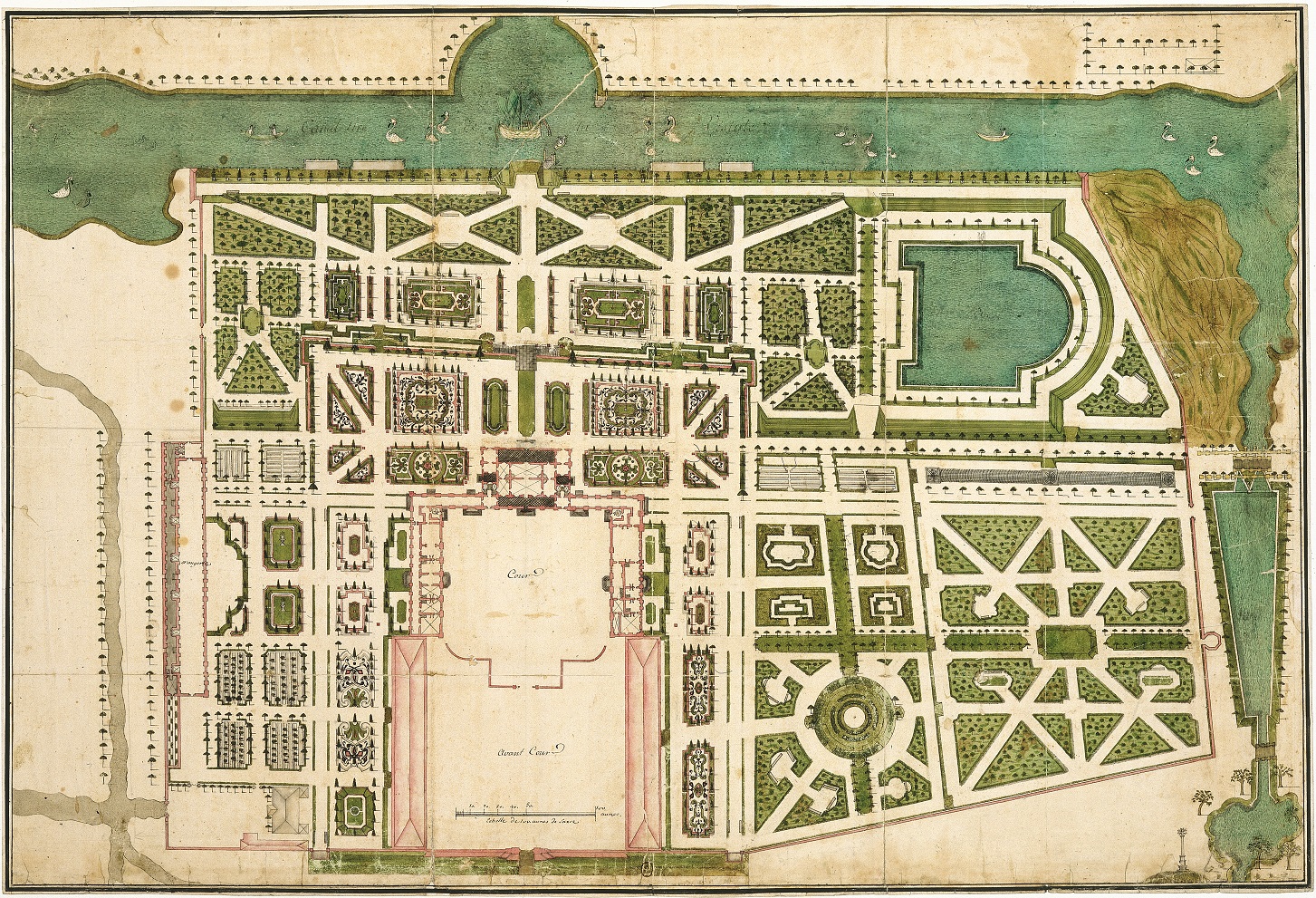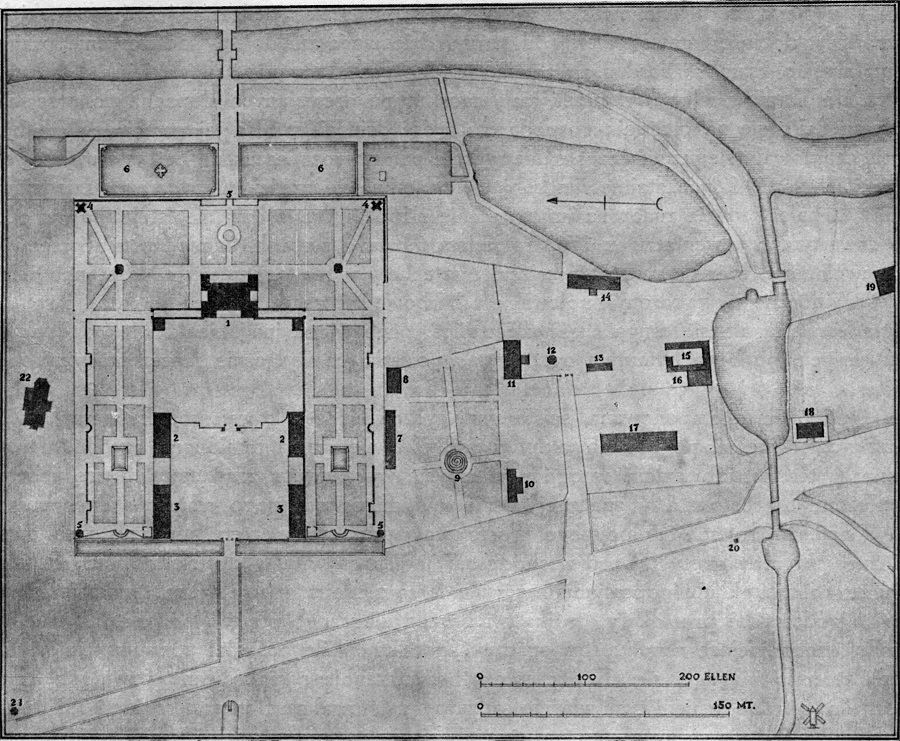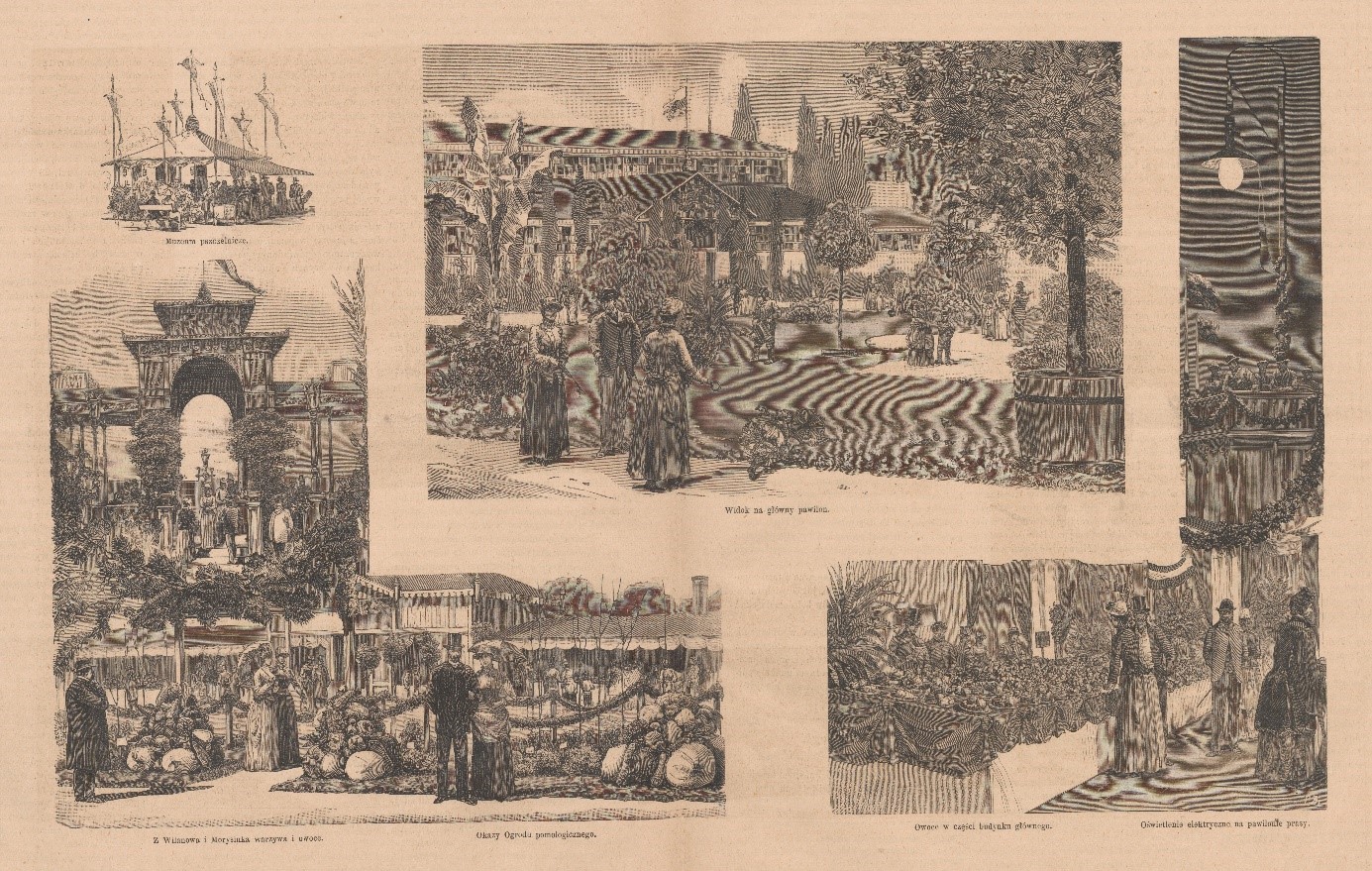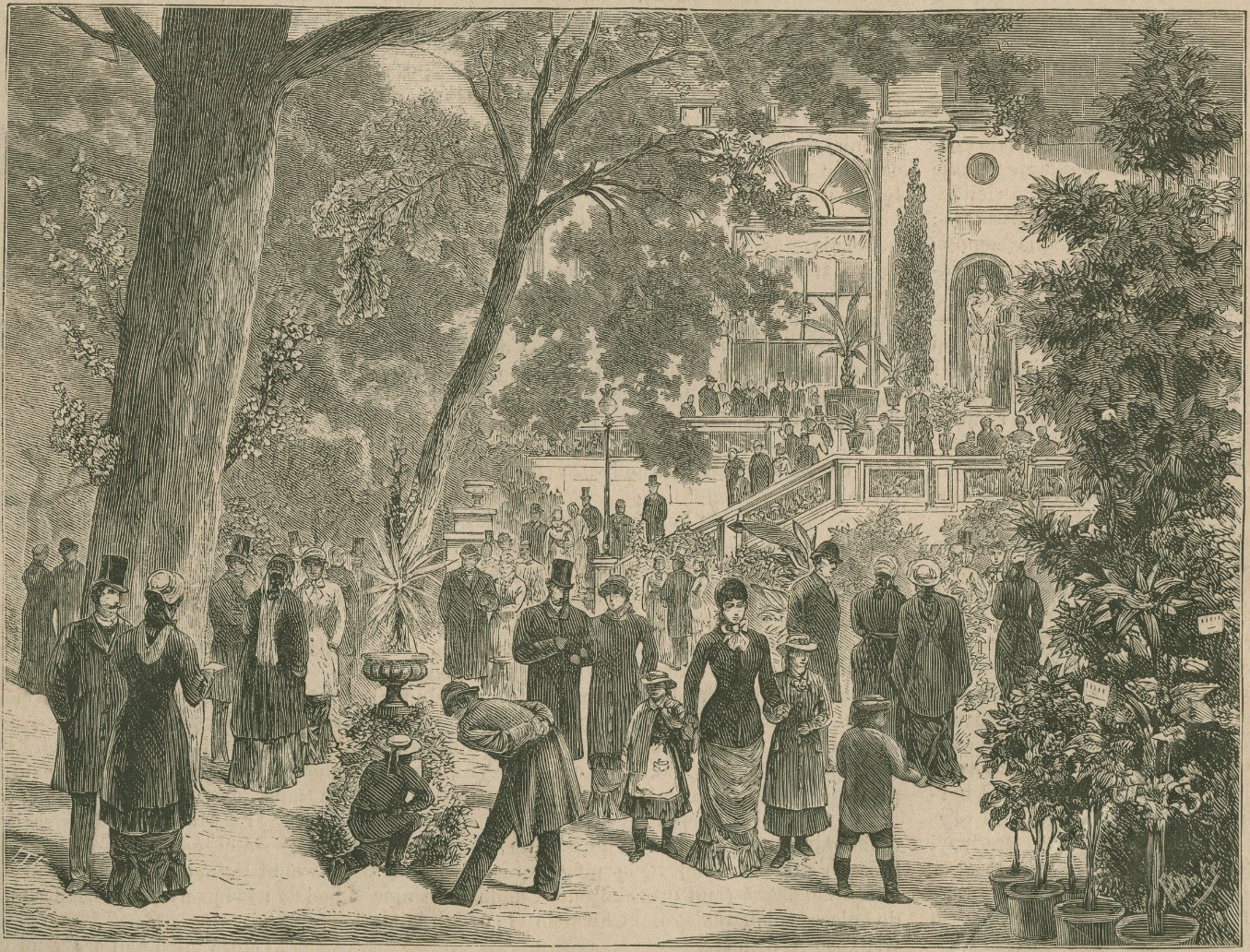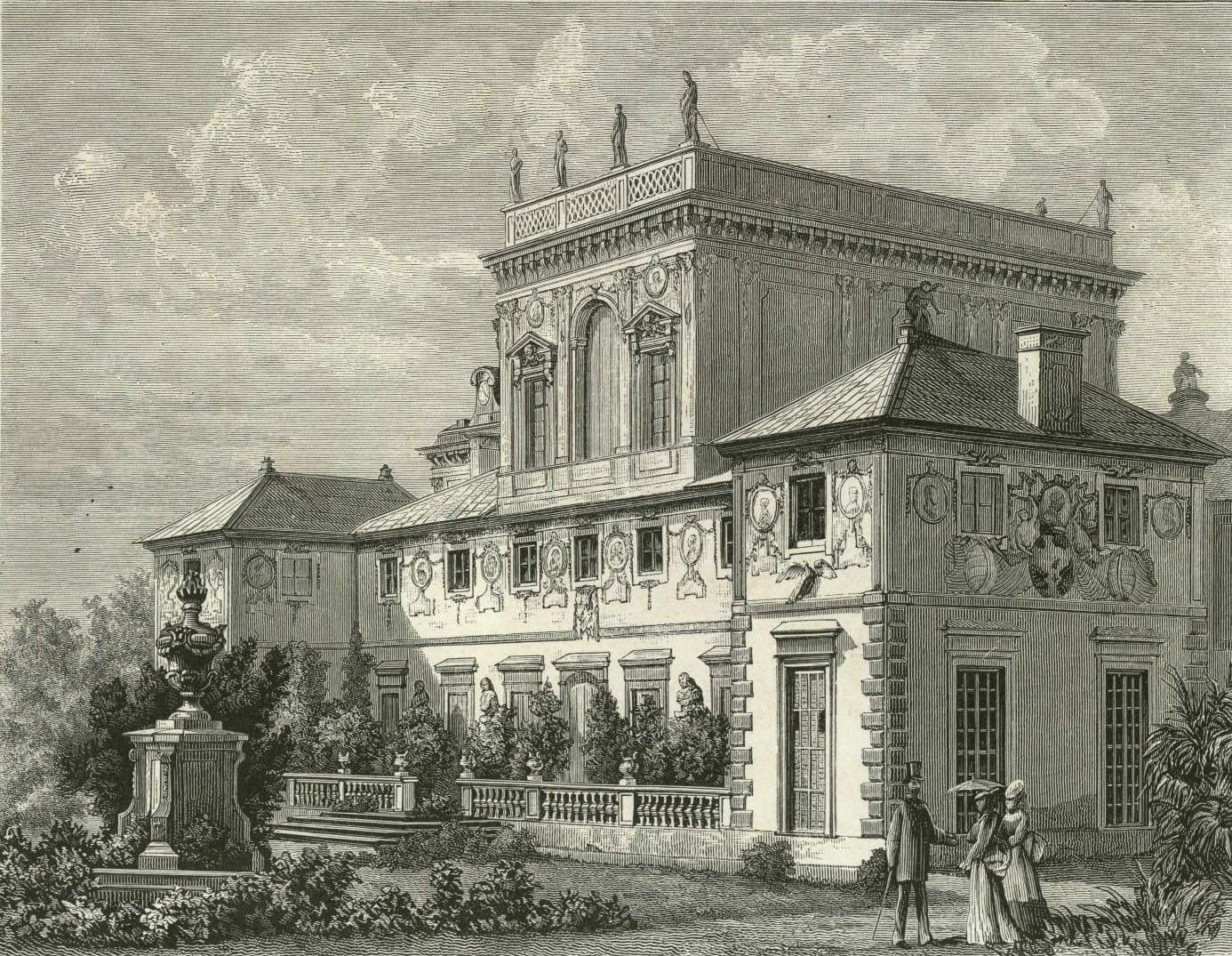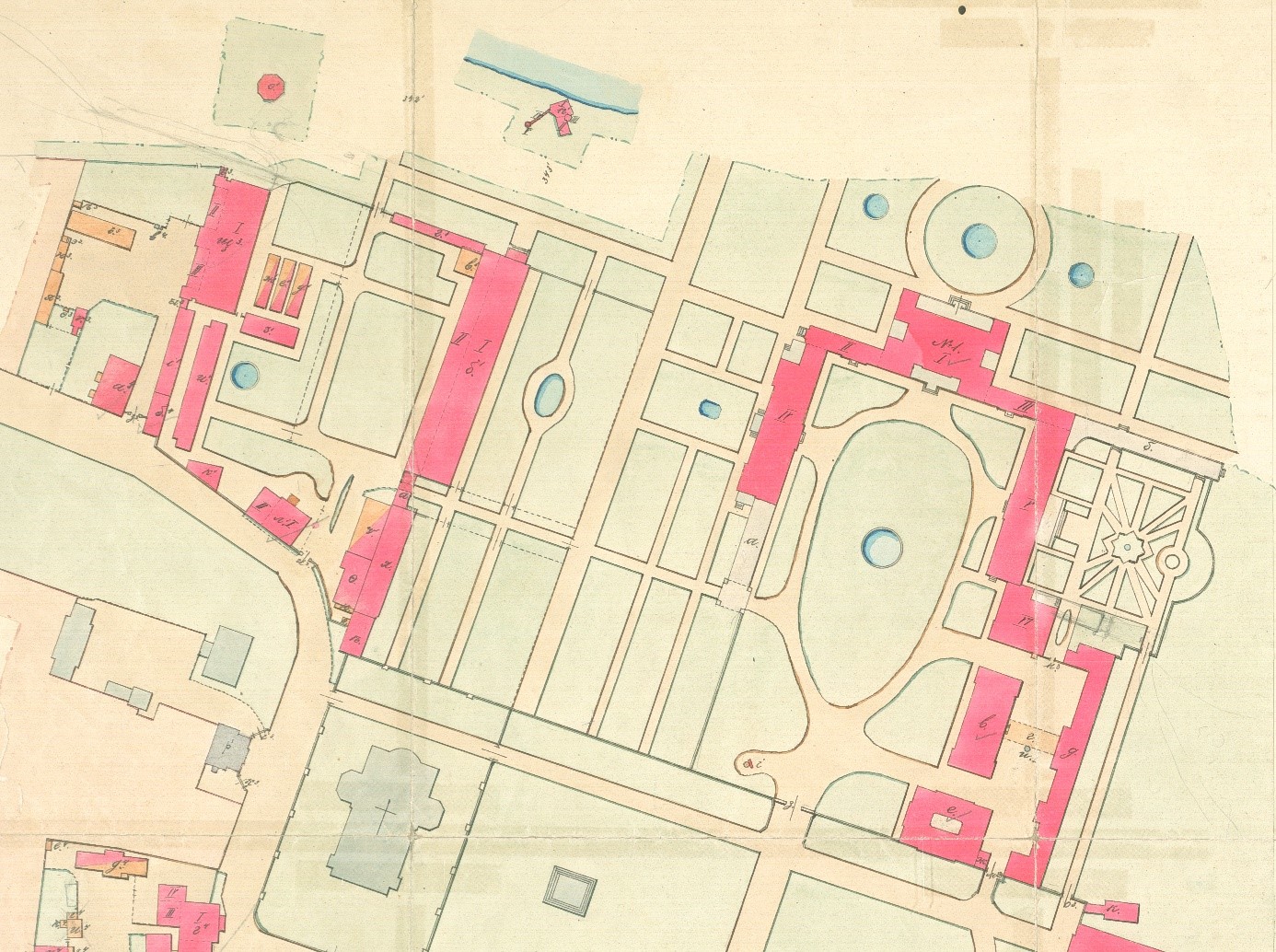The Wilanów “stricken” plant catalogue, ca. 1792–1793
18th century was a time of exceptional expansion of the Wilanów exotic plant collection. The milestone was the construction of a new orangery in the northern part of the palace complex, funded by Maria Zofia [1] and Aleksander August Czartoryski [2]. The impressive 100 m long facility was built between 1746 and 1748 according to the design by the Saxon architect Johann Sigmund Deybel [3]. It was heated using six boilers fired from the corridor running along the northern wall of the building. The interior was divided into a vestibule with an exit leading into the garden, and a main hall with an area of 800 square metres. The plant specimens grown in wooden and ceramic vessels were most likely arranged in rows, from the tallest along the northern walls to the shortest on the window side, which provided optimum insolation.
Unfortunately, little is known about the exact composition of the orangery collection. In 1792–1793, a catalogue of “stricken” plants from Wilanów was compiled, which listed 476 exotic plants, most probably intended for sale. The largest group among them were the very valuable at the time pineapple trees (Ananas comosus [L.] Merr.) of various sizes, which numbered as many as 299 specimens. An interesting collection were 21 cacti: 9 large-flowered cactus plants (Selenicereus grandiflorus [L.] Britton & Rose), 6 Indian fig opuntia plants (Opuntia ficus-indica [L.] Mill.), 4 Selenicereus triangularis (L.) D.R.Hunt and 2 Cereus repandus (L.) Mill. The catalogue also lists: 33 candelabra aloe plants (Aloe arborescens Mill.), 30 garden heliotrope plants (Heliotropium arborescens L.), 13 common lantana plants (Lantana camara L.), 9 Syrian ketmia plants, also known as rose of Sharon (Hibiscus syriacus L.), 6 string lilies (Crinum americanum L.), 5 papaya trees (Carica papaya L.), and 5 passion flowers (Passiflora capsularis L.). A botanical mystery is the 9 specimens of „Pancrece Calanica”, which was most likely Ismene narcissiflora [Jacq.] M.Roem., previously known as Pancratium calathinum Ker Gawl. Other plants included: 4 Egyptian acacias (Vachellia nilotica [L.] P.J.H.Hurter & Mabb.), 4 Indian shot plants (Canna indica L.), 3 veldt grape plants (Cissus quadrangularis L.), 3 banana trees (Musa × paradisiaca L.), 2 sugarcane plants (Saccharum officinarum L.), as well as 1 sea onion (Drimia maritima [L.] Stearn) and a date palm (Phoenix dactylifera L.).
The mysterious group of 28 “bulbs in ceramic pots” most likely inlcuded spring and summer plants popular in 18th century Commonwealth: common hyacinth (Hyacinthus orientalis L.), Persian buttercup (Ranunculus asiaticus L.), crown imperial (Fritillaria imperialis L.), netted iris (Iris reticulata M.Bieb.), white lily (Lilium candidum L.), tiger lily (Lilium bulbiferum L.), martagon lily (Lilium martagon L.), orange day-lily (Hemerocallis fulva [L.] L.), Lent lily (Narcissus pseudonarcissus L.), jonquil (Narcissus jonquilla L.), common peony (Paeonia officinalis L.), spring crocus (Crocus vernus [L.] Hill), tuberose (Agave amica [Medik.] Thiede & Govaerts), garden tulip (Tulipa gesneriana L.), van Thol tulip (Tulipa suaveolens Roth), and poppy anemone (Anemone coronaria L.).
[1] Maria Zofia Czartoryska née Sieniawska (born 15 April 1699, died 21 May 1771 in Warsaw) – duchess, daughter of Adam Sieniawski and Elżbieta Sienawska née Lubomirska, wife of duke August Aleksander Czartoryski. Owner of many estates and residences, including those in Sieniawa, Puławy, Wilanów and Brzeżany.
[2] Aleksander August Czartoryski (born 9 November 1697 in Warsaw, died 4 April 1782 in Warsaw) – prince, major-general of the Polish Army, voivode of the Ruthenian Voivodeship, general starost of Podolia and a Knight of Malta. Husband of Maria Zofia Czartoryska née Sieniawska, the owner of the Wilanów estate.
[3] Johann Sigmund Deybel (born ca. 1685–1690 in Saxony, died 1752) – Saxon architect working in Poland since early 18th century. Designed and conducted the construction of numerous sacral and secular buildings, including the palaces in Wilanów, Puławy and Białystok.
This text is part of the implementation tasks of the Author’s doctoral thesis Technical, aesthetic and management standards of restoring an exotic plant collection in historic gardens exemplified by the Wilanów residence, conducted in cooperation with Cracow University of Technology and the Museum of King Jan III’s Palace at Wilanów, financed by the Ministry of Education and Science under the 5th edition of the “Implementation doctorate” programme.
The plant catalogue was compiled on the basis of a comparative analysis with historical treatises on botany, agriculture, horticulture and ethymology:
- Czerwiakowski I. R., Botanika ogólna roślin jawnopłciowych, vol. 1, Kraków 1841; vol. 2, Kraków 1841.
- Czerwiakowski I. R., Opisanie roślin dwulistniowych lekarskich i przemysłowych, vol. 2, Kraków 1852; vol. 3, Kraków 1859; vol. 4, Kraków 1859; vol. 5, Kraków 1860; vol. 6, Kraków 1863.
- Kluk J. K., Dykcyonarz roślinny, w którym podług układu Linneusza są opisane rośliny nie tylko kraiowe dzikie, pożyteczne, albo szkodliwe: na roli, w ogrodach, oranżeryach, utrzymywane: ale oraz y cudzoziemskie, któreby w kraiu pożyteczne byc mogły: albo z których mamy lekarstwa, korzenie, farby itd., albo które jakową nadzwyczajność w sobie mają: ich zdatności lekarskie, ekonomiczne, dla ludzi, koni, bydła, owiec, pszczół, itd. utrzymywanie, i.t.d. Z poprzedzaiącym wykładem słów Botanicznych, y kilkorakim na końcu Regestrem, vol. 1, Warszawa 1786; vol. 2, Warszawa 1787; vol. 3, Warszawa 1788.
- Majewski E., Słownik nazwisk zoologicznych i botanicznych polskich, zawierający ludowe oraz naukowe nazwy i synonimy polskie, używane dla zwierząt i roślin od XV-go wieku do chwili obecnej, źródłowo zebrane i zestawione z synonimami naukowemi łacińskiemi w podwójnym porządku alfabetycznym i pomnożone porównawczym materyałem, zaczerpniętym z innych języków słowiańskich, vol. 1, Słownik polsko-łaciński, Warszawa 1889; vol. 2, Słownik polsko-łaciński, Warszawa 1894.
- Rostafiński J., Słownik polskich imion rodzajów oraz wyższych skupień roślin poprzedzony historyczną rozprawą o źródłach, Kraków 1900.
- Szubert M., Spis roślin Ogrodu Botanicznego Królewsko-Warszawskiego Uniwersytetu, Warszawa 1820.
- Wodzicki S. K., O chodowaniu, użytku, mnożeniu i poznawaniu Drzew, Krzewów, Roślin i Ziół celnieyszych: ku ozdobie Ogrodów przy zastosowaniu do naszej strefy, vol. 3, Kraków 1820.
Bibliography
- Katalog Drzewek roznych Ogrodowych skassowanych w Willanowie, ca. 1792–1793, Inwentarze, specyfikacje i regestra domów, pałaców, mobiliów i różne effecta, 1682–1896, Central Archive of Historical Records in Warsaw, the Potocki Archives from Łańcut, ref. no. 1/350/0/-/132, pp. 263–264.
- Kuśmierski J., Wilanów citrus collection in the eighteenth century, Passage to knowledge Museum of King Jan III’s Palace at Wilanów, 06.10.2021. https://www.wilanow-palac.pl/the_wilanow_citrus_collection_in_the_eighteenth_century.html
- Majdecki L., Majdecka-Strzeżek A., Ochrona i konserwacja zabytkowych założeń ogrodowych, Warszawa 2019, p. 271.
- Sikora D., Hanaka A., Morysiński T., Jankowski A., Ogród wilanowski. Rekonstrukcja układu przestrzennego tarasu górnego z czasów Jana III Sobieskiego i Elżbiety Sieniawskiej, Museum of King Jan III’s Palace at Wilanów, Warszawa 2006, p. 5 [typescript].
- Sikora D., Szata roślinna ogrodu wilanowskiego w czasach baroku, "Episteme: Czasopismo Naukowo-Kulturalne", no. 20, vol. 2, 2013, pp. 237–262.
- Skoneczna E., Domańska K., Prezentacja roślin z XVII i XVIII w. stosowanych w ogrodach wilanowskich. Na podstawie inwentarzy wilanowskich i innych źródeł historycznych, Museum of King Jan III’s Palace at Wilanów, Warszawa 2014 [typescript].
